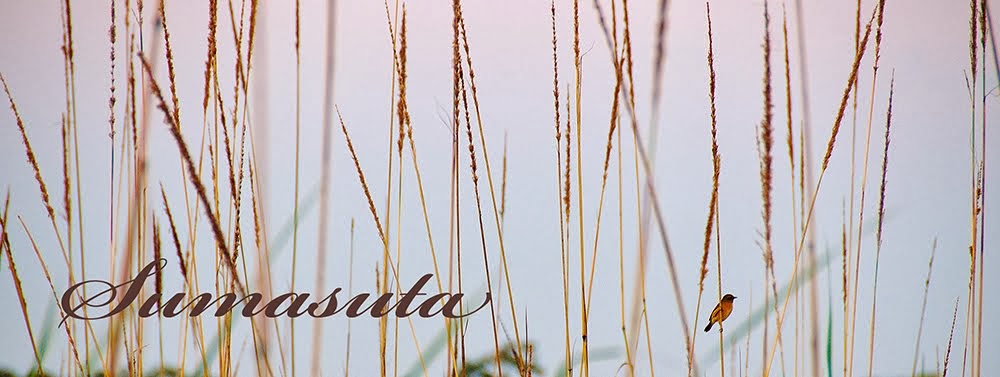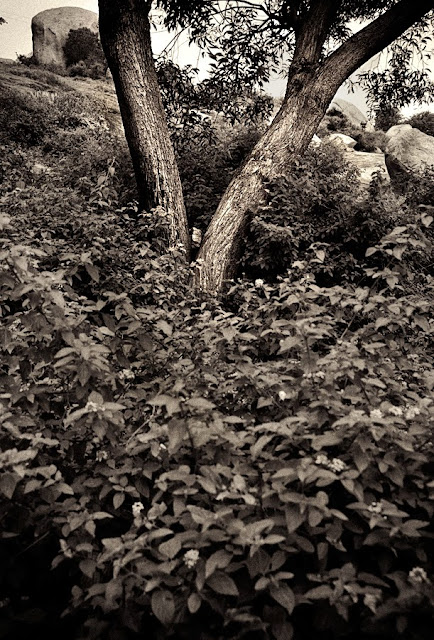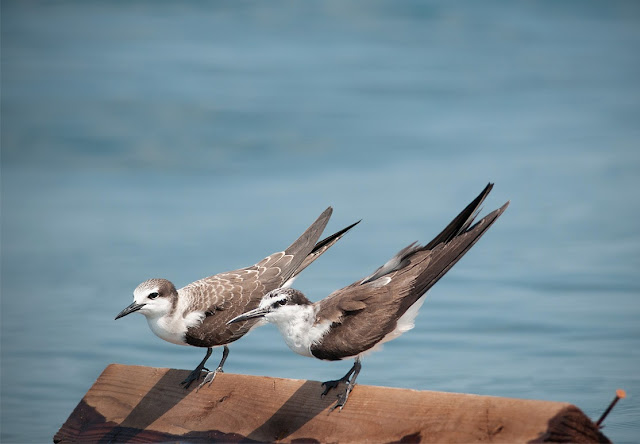When we go to a place that has got wide views, say top of a mountain, often we find that it is difficult to convert the feel of being there into an effective image. This problem is equally faced by any tourist/trekker and a photographer. It is often very difficult to convert the feel of being at a place that has the view of a very vast expanse into something measurable as the pixels.
One of the ways, which sometime does a better job than a conventional two dimensional photograph is to shoot multiple frames across the vastness and creating a panorama by stitching those images together.
Though it has got the limitation of scrolling to see the whole image, but the sense of how wide the scene was would still be maintained.
I had faced same problem on various occasions. The one that I remember the most was while I was at Unchalli Falls on a near full moon night at around 12:30AM! I was there to shoot the falls in the moon night and my initial idea was to shoot the falls using a wide angle including some portion of the sky with few stars. But when I stood at the shooting spot I saw that the whole valley was lit up beautifully with the moonlight and I just dumped the idea of shooting only the falls since it was not giving any meaning when compared to the feel of being there at night and looking at the moon-lit valley. I decided to make a panorama and result is the below image.
When I was at Hampi to shoot for the book on Daroji, I saw an opportunity to make another panorama. This time I was without a tripod and the whole scene was very very wide. I took a chance and went ahead with shooting handheld and it took about 20+ images to cover the complete scene. Luckily the stitch went perfect and I was very happy with the result.
This year when I had been to Ooty with my wife there was a huge Eucalyptus tree. I was at a slightly higher place and it was difficult to shoot the tree. It was either getting distorted due to the wide angle lens or it was not completely covering in the frame. Then Sahana suggested me to try a vertical panorama and there you go, it was a fantastic idea! I tried the vertical panorama for the first time and the result was not bad at all!
There were few more occasions when I found panoramas did a better job in conveying my feeling on that place. I have shared few more here which I think you would enjoy.
Do let me know what do you think about this thought about making panoramas.
There are many more panoramas on our gallery dedicated to panoramas on Landscape wizards.
Here is the link: http://www.landscape-wizards.com/home/our-work/panoramas
Cheers,
Ash
One of the ways, which sometime does a better job than a conventional two dimensional photograph is to shoot multiple frames across the vastness and creating a panorama by stitching those images together.
Though it has got the limitation of scrolling to see the whole image, but the sense of how wide the scene was would still be maintained.
I had faced same problem on various occasions. The one that I remember the most was while I was at Unchalli Falls on a near full moon night at around 12:30AM! I was there to shoot the falls in the moon night and my initial idea was to shoot the falls using a wide angle including some portion of the sky with few stars. But when I stood at the shooting spot I saw that the whole valley was lit up beautifully with the moonlight and I just dumped the idea of shooting only the falls since it was not giving any meaning when compared to the feel of being there at night and looking at the moon-lit valley. I decided to make a panorama and result is the below image.
Unchalli Falls at night. (Click for the lager image)
When I was at Hampi to shoot for the book on Daroji, I saw an opportunity to make another panorama. This time I was without a tripod and the whole scene was very very wide. I took a chance and went ahead with shooting handheld and it took about 20+ images to cover the complete scene. Luckily the stitch went perfect and I was very happy with the result.
Hampi (Click for the lager image)
This year when I had been to Ooty with my wife there was a huge Eucalyptus tree. I was at a slightly higher place and it was difficult to shoot the tree. It was either getting distorted due to the wide angle lens or it was not completely covering in the frame. Then Sahana suggested me to try a vertical panorama and there you go, it was a fantastic idea! I tried the vertical panorama for the first time and the result was not bad at all!
That is Sahana to give the scale of the hugeness of the tree :)
There were few more occasions when I found panoramas did a better job in conveying my feeling on that place. I have shared few more here which I think you would enjoy.
Devarayana Durga (Click for the lager image)
Nameri, post sunset (Click for the lager image)
Bheemanavaare (Click for the lager image)
Jenukallu Gudda (Click for the lager image)
Bhyundar Valley (Valley of Flowers)
Do let me know what do you think about this thought about making panoramas.
There are many more panoramas on our gallery dedicated to panoramas on Landscape wizards.
Here is the link: http://www.landscape-wizards.com/home/our-work/panoramas
Cheers,
Ash























































